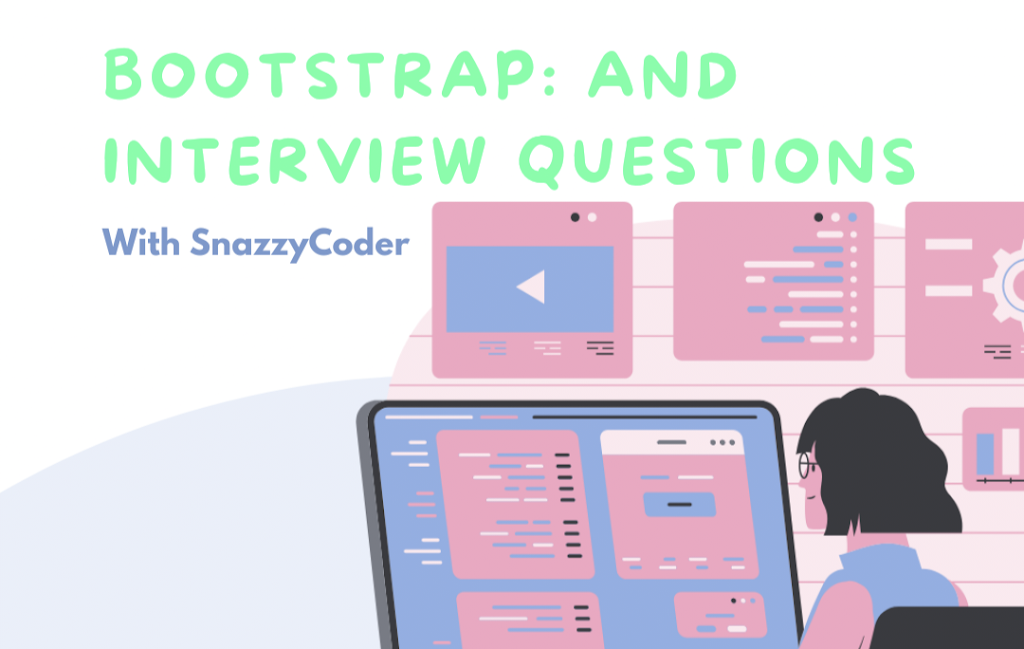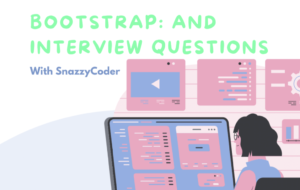In the ever-evolving landscape of web development, creating visually appealing and responsive websites is crucial. Enter Bootstrap, an open-source front-end framework that has become a staple for developers seeking efficiency and consistency in their projects.
Understanding Bootstrap
Bootstrap, originally developed by Twitter and now maintained by the open-source community, is a robust framework offering a comprehensive set of tools for crafting modern web applications. Its core features are designed to streamline the development process and ensure a seamless user experience across various devices and screen sizes.
Responsive Design at Its Core
One of Bootstrap’s standout features is its commitment to responsive design. In a world where users access websites on diverse devices, from desktop computers to smartphones, responsiveness is paramount. Bootstrap’s grid system enables developers to create flexible layouts that adapt gracefully to different screen dimensions, ensuring a polished look on any device.
Grid System: A Developer’s Canvas
At the heart of Bootstrap’s responsiveness lies its grid system. This feature empowers developers to construct adaptable layouts using a simple and intuitive syntax. By defining column sizes and adjusting layouts based on screen width, Bootstrap facilitates the creation of visually appealing designs that seamlessly adjust to the user’s device.
Pre-styled Components for Rapid Development
Bootstrap doesn’t stop at responsive grids. It provides an extensive collection of pre-styled components, ranging from buttons and forms to navigation bars and modals. These components serve as building blocks, allowing developers to quickly integrate polished elements into their projects. The result? Consistency and professionalism across web applications without the need to reinvent the wheel.
Extensive Documentation: Your Compass in Bootstrap World
Navigating Bootstrap is made easy through its comprehensive documentation. Whether you’re a seasoned developer or just starting, the documentation serves as a valuable resource, offering guidance on effectively utilizing Bootstrap’s features and components. Troubleshooting and finding solutions to common challenges become a breeze, thanks to this well-documented framework.
Community Support: Strength in Numbers
As an open-source project, Bootstrap boasts a vibrant and active community of developers. This community not only contributes to the framework’s ongoing development but also provides support, shares resources, and extends the capabilities of Bootstrap. The collaborative nature of the Bootstrap community adds an extra layer of strength and versatility to this already powerful framework.
Customization for Unique Identities
While Bootstrap offers a default theme, developers have the freedom to infuse their projects with a unique identity. Customization options, such as modifying variables or applying custom themes, empower developers to tailor the appearance of their web applications to suit specific branding or design preferences.
Look at the Interview Questions
Introduction to Bootstrap:
1. What is Bootstrap? Describe its purpose in web development.
2. Explain the concept of responsive design in the context of Bootstrap.
3. What are the key benefits of using Bootstrap in web development?
4. How does Bootstrap help in creating consistent and visually appealing user interfaces?
5. Describe the grid system in Bootstrap and its significance.
Bootstrap Components:
6. List some common Bootstrap components used for layout and structure.
7. Explain the purpose of the “container” and “container-fluid” classes in Bootstrap.
8. How would you create a responsive navigation bar using Bootstrap?
9. What is a “jumbotron” in Bootstrap? When and how would you use it?
10. Describe the use of Bootstrap’s “cards” component for displaying content.
Bootstrap Typography:
11. Explain the role of the “typography” classes in Bootstrap.
12. How do you change the default font family and size using Bootstrap?
13. Describe the purpose of the “text-center”, “text-left”, and “text-right” classes.
14. How can you emphasize text using Bootstrap’s text-related classes?
15. What is the purpose of the “lead” class in Bootstrap typography?
Styling with Bootstrap:
16. Explain the process of customizing Bootstrap’s default styling.
17. How can you override Bootstrap’s styles for specific elements?
18. Describe how you would apply colors and background colors using Bootstrap classes.
19. How does Bootstrap handle responsive images? Provide examples.
20. What are “utilities” classes in Bootstrap? Give examples of their usage.
Bootstrap Forms:
21. How do you create a basic form using Bootstrap’s form classes?
22. Explain the purpose of the “form-group” and “form-control” classes.
23. How would you create inline forms and horizontal forms using Bootstrap?
24. Describe the use of Bootstrap’s “input groups” and “form validation” classes.
25. What is the purpose of the “disabled” attribute in Bootstrap forms?
Buttons and Icons:
26. How do you create buttons using Bootstrap classes?
27. Explain the differences between primary, secondary, success, danger, warning, and info buttons in Bootstrap.
28. How can you create button groups and button dropdowns in Bootstrap?
29. Describe how to include icons in Bootstrap buttons using the “glyphicon” or “font-awesome” libraries.
30. What is the purpose of the
“btn-block” class in Bootstrap buttons?
Modals and Alerts:
31. Explain how you would create a modal dialog using Bootstrap.
32. How can you trigger a modal to open programmatically using JavaScript?
33. Describe the purpose of Bootstrap’s “alert” component for displaying messages.
34. How would you add a dismissible close button to Bootstrap alerts?
35. How do you customize the appearance and behavior of Bootstrap alerts and modals?
Carousel and Collapse:
36. What is the Bootstrap “carousel” component used for? Provide an example.
37. Explain how you can add navigation controls to a Bootstrap carousel.
38. How can you make a Bootstrap carousel automatically slide through images?
39. Describe the purpose of Bootstrap’s “collapse” component and how to use it.
40. How do you toggle the visibility of content using the collapse component?
Navigation and Tabs:
41. How do you create a navigation bar with tabs using Bootstrap?
42. Explain how the “nav” and “nav-tabs” classes are used to create tab navigation.
43. How can you create stacked and justified tab navigation in Bootstrap?
44. Describe how you would add dropdown menus to Bootstrap navigation bars.
45. How do you add “active” states to tabs and navigation links in Bootstrap?
Flexbox and Spacing:
46. What is the role of Flexbox in Bootstrap’s grid system?
47. Explain how Flexbox helps in creating responsive layouts in Bootstrap.
48. Describe the purpose of Bootstrap’s spacing utilities (margin and padding classes). 49. How do you use the “mx-auto” class to horizontally center a block element?
50. How can you control spacing between elements using Bootstrap’s spacing classes?
Conclusion
In the world of web development, where efficiency and visual consistency reign supreme, Bootstrap stands tall as a reliable ally. Its responsive design principles, versatile grid system, pre-styled components, extensive documentation, and active community support make it a go-to choice for developers aiming to deliver exceptional user experiences.
As you embark on your next web development journey, consider harnessing the power of Bootstrap to unlock a world of possibilities and elevate your projects to new heights. Whether you’re a seasoned pro or just getting started, Bootstrap is here to simplify and enhance your development process. Happy coding!

